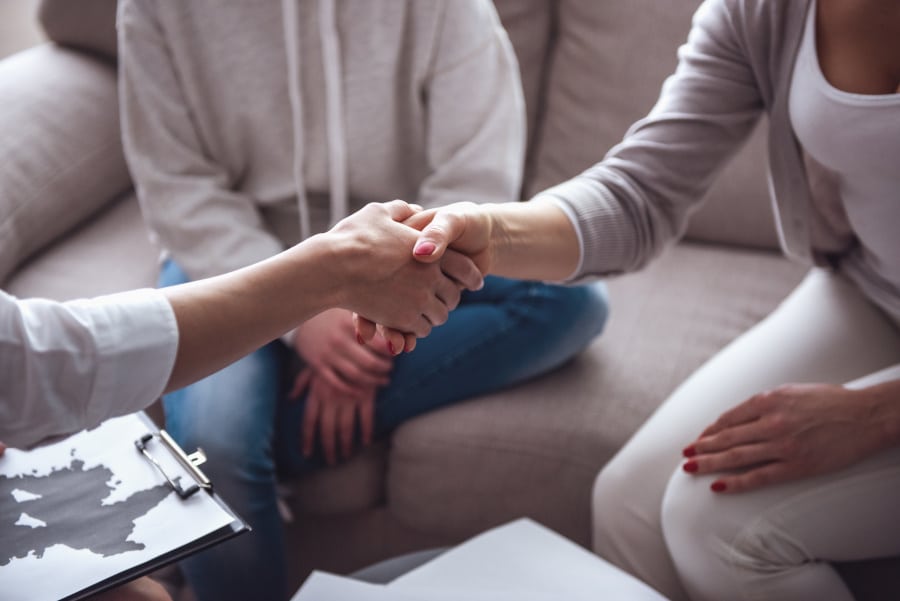Body dysmorphic disorder (BDD), or body dysmorphia as it’s commonly referred to, is a condition in which people find it difficult to stop thinking about certain areas of their body and perceive them to be flawed. If you have a friend or a loved one going through this condition, it’s not easy to know what to say, how to say it, and where you draw the line in your speech. But there are numerous ways to support a friend on their path to recovery or even help them align themselves with a supportive therapy group or system that ensures they receive treatment. Let’s explore how to have appropriate conversations that help support their recovery journey.
What Is Body Dysmorphia?
Body dysmorphia is a mental health condition in which individuals are preoccupied with perceived physical flaws. This encompasses their mind and bodies, leading to a level of discomfort that lasts extended periods and impacts emotions and habits. As a result, individuals with these conditions often seek extreme changes to “fix” these perceived faults. It’s believed that around 0.7% to 2.4% of the world is affected by BDD, and while it does seem like a small number, it certainly can have lasting effects on the people it impacts.[1]
How to Identify Body Dysmorphia
Body dysmorphia can be challenging to identify, mainly because the signs aren’t widespread or well-known. Medical professionals note that people with BDD often focus on the idea that they have some sort of defect, which differs from most people with eating disorders. Additionally, we all struggle with adverse thoughts and feelings about ourselves, so it can be awfully tough to distinguish between what’s a mental illness and what isn’t. This is even more true when observing an individual like your friend or family member.
That said, there are still many effective methods to help you zero in on a potential BDD diagnosis — ways that often overlap with some of the more common eating disorders. Understanding what to say starts with knowing what you’re dealing with, so be sure to note any of the following signs of BDD in your friend or loved one:
- Attempts to hide perceived flaws with makeup, clothing choices, etc.
- Frequent comparisons are made to other people
- Excessive time spent [was there more that was planned for this sentence?]
- Repetitive looks in the mirror
- Often questions you about how they look
- They frequently become withdrawn when in public
Do You Have a Friend with Body Dysmorphia? Here Are Some Ways to Help
The most significant people in our lives are our friends and family, and that’s not just because they’re with us for our best moments. The best people stick by our side through thick and thin, and you can be there for your friend when they need it most. They might seem overwhelmed with their thoughts, but with the right words (or sometimes, no words at all), you can communicate the things that make each day easier.
Listen
Words aren’t always necessary. Sometimes we just need someone there to help us feel understood, and much research has shown that individuals with BDD often feel shame or embarrassment discussing their condition.[2] By listening attentively, you can help bridge the gap and help them feel more comfortable expressing their feelings.
Stay Educated
One thing mental health professionals strive to communicate is that every situation is different. But while you may not know exactly what your friend is feeling, you might be able to understand their perspective better. That starts by educating yourself with available resources like books, online support groups, and professionally reviewed sources.
Practice Patience
Patience is key. BDD won’t resolve itself over a few days, nor should you expect it to. Instead, focus on continual progress and supporting your friend, and you’ll help them make the most of their recovery journey.
Encourage Your Friend to Get Professional Help
Professional support may be necessary. Support your friend by recommending professional treatment options that can guide them through recovery.
Know What to Say
We know it can be tough to find the right words, especially when your friend expresses discomfort and discontent with their situation. You might sometimes feel stuck, but there are some things you can say that help your friend feel understood also show them you’re there to help. They might seem simple, but use the phrases below:
- “You’re not alone.”
- “I’m sorry you’re going through this.”
- “I’m ready to listen when you’re ready to talk.”
Professional Support Is One Call Away — Turn to Selah House
Treatment centers like Selah House help support people struggling with co-occurring eating disorders and body dysmorphia. With evidence-based treatment methods and clinical professionals that put your needs first, these treatment centers help you throughout your recovery.
For more detailed information, call Selah House at 765.442.3551 or fill out our contact form, and we’ll contact you.
Sources:
[1] https://www.ncbi.nlm.nih.gov/pmc/articles/PMC3181960/
[2] https://psychcentral.com/disorders/when-your-loved-one-has-body-dysmorphic-disorder#how-to-help

 Call
Call

